- Identify social-emotional milestones in infants and toddlers.
- Discuss the role adults can play in supporting the social-emotional skills of infants and toddlers.
- Discuss what to do if you are concerned about the social-emotional development of an infant or toddler in your care.
Learn
Know
Emotional well-being during the early years has a powerful impact on social relationships. Children who are emotionally healthy are better able to establish and maintain positive relationships with adults as well as with peers. Social-emotional development is essential to a young child’s sense of well-being. Their first relationships help shape who they are, who they become, and their understanding of the world. The important people in young children’s lives help lay the foundation for a range of social-emotional skills such as:
- Self-regulation
- Empathy
- Turn-taking and sharing
- Positive relationships with adults and peers
Social-Emotional Milestones
Through early relationships with nurturing and responsive adults, infants and toddlers learn how to be in relationships, how to get their needs and wants met, and how to identify and regulate emotions. Since these skills develop together, this area of development is referred to as social-emotional development.
Below is a chart that highlights how infants and toddlers develop social-emotional skills at different ages. Keep in mind that individual differences exist when it comes to the precise age at which infants and toddlers meet these milestones. Milestones are not checklists with which to judge children’s development. Rather, they provide a guide for when to expect certain skills or behaviors to emerge in young children so you are prepared to meet their changing needs. Think of milestones as guidelines to help you understand and identify typical patterns of growth and development in infants and toddlers. You can continue to use these milestones to help meet the needs of the young children in your care. Although the skills highlighted in the chart develop in a predictable sequence over the first three years of life, each infant and toddler is unique. Your goal is to help all infants and toddlers in your family child care setting grow and learn to their potential.
Social-Emotional Developmental Milestones
2 months
- Calms easily
- Smiles at others
- Reacts positively when spoken to
- Appears to recognize and react to bottle or breast
4 months
- Smiles to get someone’s attention
- Moves or makes sounds to get a reaction
- Giggles, but not yet a full laugh
- Plays with their own hands and fingers
- Smiles or coos at self in a mirror
6 months
- Recognizes families voices and faces
- Laughs
- Interested in self in a mirror
- Plays with own feet
- Tries to get a toy that is out of reach
9 months
- May be shy around strangers
- Elicits various facial expressions
- Knows own name and looks when called
- Reacts when familiar adults leave the room
- Laughs and smiles during peek-a-boo
12 months
- Plays social games like pat-a-cake
- Offers a toy when asked for it, but may not let go
- Helps dress self by lifting arm or leg
- Rolls a ball to another person
15 months
- Copies simple and pleasurable actions
- Claps when happy pr excited
- Hugs or kisses a stuffed doll
- Shows familiar adults affection
- Points to ask for something or get help
18 months
- Uses familiar adults as a secure base when playing
- Points to show adults something interesting or ask for help
- Looks as pages in a book with adult
- Helps with dressing by pushing arms through sleeves or leg through pants
- Copies adult actions such as wiping a table or combing hair
24 months
- Observes and reacts when others are upset
- Looks to adults to understand how to react to new situations
- Treat stuffed animal or doll like a baby (rocks, feds, diapers, etc.)
- Refers to self as “I” or “me” more often than using their own name
30 months
- Plays near other children and sometimes plays with them
- Understands and follows simple routines
- Copies adults
- Dresses self in loose clothing
36 months
- Joins peers in play
- Separates easily from familiar adult
- Takes turns
- Shows a wide range of emotions
It is helpful to remember that expectations about social-emotional milestones are driven by cultural values and preferences. Adults share their cultural values and beliefs with children through daily interactions. Ideas, beliefs and expectations about child development are just some of the ways cultures are unique. Becoming aware of and respecting these differences can help you better understand families’ experiences that help shape the infants and toddlers in your care.
Social-Emotional Development and Other Areas of Development
As we gain more understanding about brain growth and young children’s development, we continue to learn about the ways adult caregivers can be supportive and most effective in helping children develop and learn. This growing understanding also includes how adult caregivers can help children develop social-emotional skills. Through nurturing and trusting relationships, infants and toddlers learn about the world. Their brains mature through interactions, and they can learn that the world is safe. Through responsive caregiving from adults, they learn how to form relationships, communicate, respond to challenges, and recognize, experience, and regulate their emotions.
When infants and toddlers feel safe and alert, they are more likely to observe, explore, play, interact, and experiment with people and objects. These experiences lead young children to learn and remember new things. This foundation for learning depends greatly on the quality of infants’ and toddlers’ early environments and relationships. Infants and toddlers are working toward the development of social-emotional competence.
Understanding and Supporting the Social-Emotional Development of Infants and Toddlers
Now that you have read the milestone chart, let’s revisit the definition of social-emotional development according to the organization Zero to Three:
Within the context of one’s family, community and cultural background, social-emotional health is the child’s developing capacity to form secure relationships, experience and regulate emotions, and explore and learn.
Below, take a closer look at the pieces highlighted within this definition to identify additional ways to understand and support the social-emotional development of the infants and toddlers in your care.
Birth to 3 months:
- The first three months are a time all about helping an infant learn to feel safe, comfortable, secure, and curious about his or her world. “Your smile and gentle touch help me to feel safe and happy.”
- When caregivers respond to an infant’s cues with comfort and care, infants develop trust. “Your soothing voice and touch helps me to feel safe, secure, and loved.”
- Infants use sounds, facial expressions, and body movements to tell caregivers what they need and how they are feeling. “I am learning how to tell you what I need. Sometimes I look away when I need a break. I yawn sometimes when I am feeling tired. Thank you for watching and getting to know me.”
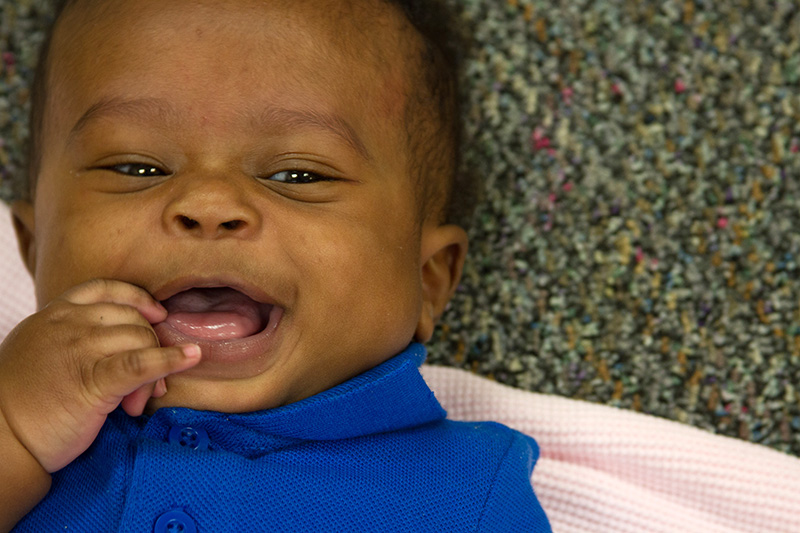
3 to 6 months:
- The infant is active, responsive, and increasingly in control of his or her body. “I stretch my arms toward you when I want you to pick me up and hold me gently.”
- Infant offers smiles and communicates with a gaze and basic vocalizations. “I’m smiling to let you know I am ready to communicate.”
- Sense of security and well-being are totally dependent upon relationships with important caregivers.
- Emphasis is on routine and exploration—showing caregivers what they like and dislike, and how they prefer to sleep, eat, and play. “I’m beginning to notice daily routines and the things we do together. When you turn the lights down, I know that it is time for sleep.”

6 to 9 months:
- Moving and exploring is the goal – infants become eager explorers who are thrilled to discover that they can make things happen.
- Infants are learning to solve problems. “When a toy drops, I look to see where it went. I expect you will help me to get it back. I then try it again to see if I can make the same thing happen again.”
- An infant is beginning to understand that people still exist even when they are out of sight. “I realize that my mommy is about to leave me. I will protest in hopes that she stays. Being separated from her is hard for me.”
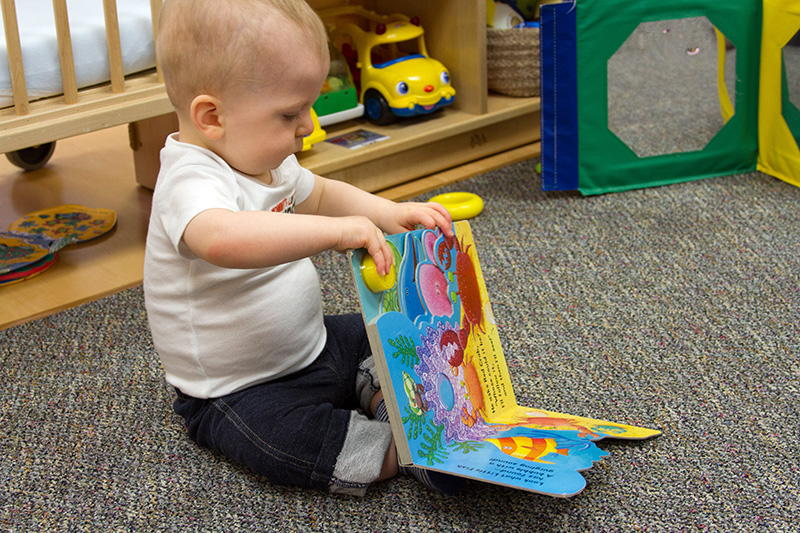
9 to 12 months:
- Infants are enjoying increased independence. “Please stay calm even when I demand to do things on my own. It’s hard work for me to learn and figure out all of these new things and sometimes I get frustrated, but I want to keep trying.”
- Infants can understand more than they can verbally communicate.
- Infants enjoy doing things over and over again. “Watch me practice and figure out how things work! Repetition is also helping me build my memory!”
- Infants take action with a goal in mind. “When I crawl away from you quickly, I am not trying to upset you. I am having fun and do not want my diaper changed right now. This is how I take control of my world and let you know how I am feeling. Please talk to me and give me time to transition from my activity, and let me know that when we’re done I can go back to what I was doing.”
12 to 18 months:
- Infants and toddlers are watching others and imitate what they see. “I have been watching and am able to use things the way they are supposed to be used. Watch me talk on this toy telephone!”
- Infants and toddlers are using skills to explore and discover the boundaries of what they can do. “I may get frustrated when you try to feed me and I want to do it on my own.”
- Infants and toddlers are beginning to understand feelings of self and others. “My feelings can be hard for me to handle. I may become frustrated and have tantrums. I need your help to calm down.”
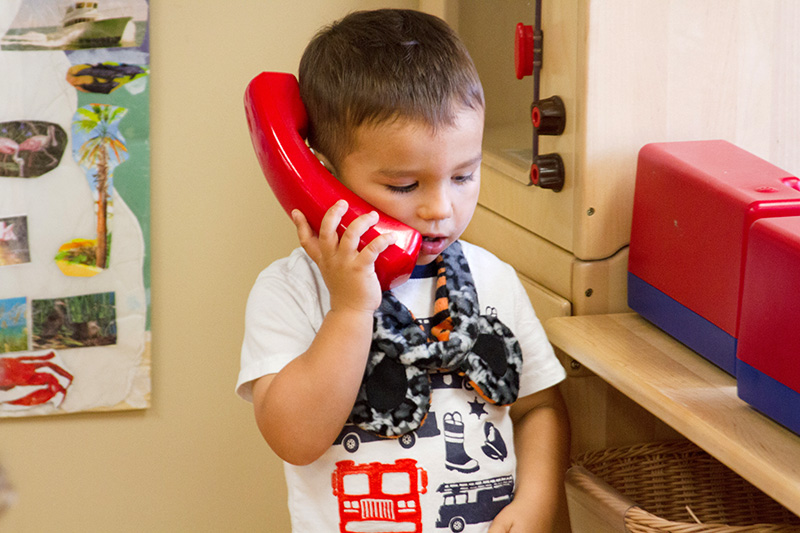
18 to 24 months:
- Toddlers work hard to be in control, explore the boundaries of their experiences, and engage in problem solving. “I am beginning to sort things. Notice how I put my train cars in one place and all of my other cars in another.”
- They are increasingly aware of themselves as separate from others and are becoming more enthusiastic about playing with peers.
- They are starting to show negative behaviors (hitting, biting, kicking) in response to frustration. “I understand, ‘No,’ but cannot control my feelings and actions. Please be patient and help me when I get frustrated.”
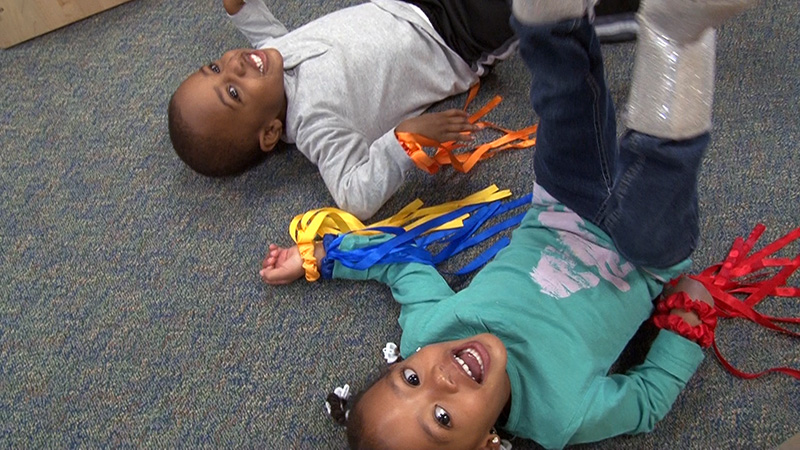
24 to 36 months:
- Toddlers are using language to express thoughts and feelings. “When you started to put the blocks away too soon, I yelled, ‘That’s not right!’ I wanted to make a path for the cows before we put things away.”
- Toddlers are using enhanced thinking skills to solve problems. “I am getting really good at playing pretend. I can act out my own stories and use a bottle to feed my teddy bear. Sometimes, I feel scared because I am not certain yet what is real and what is pretend.”
- Toddlers take pride in their accomplishments, such as, pouring milk.
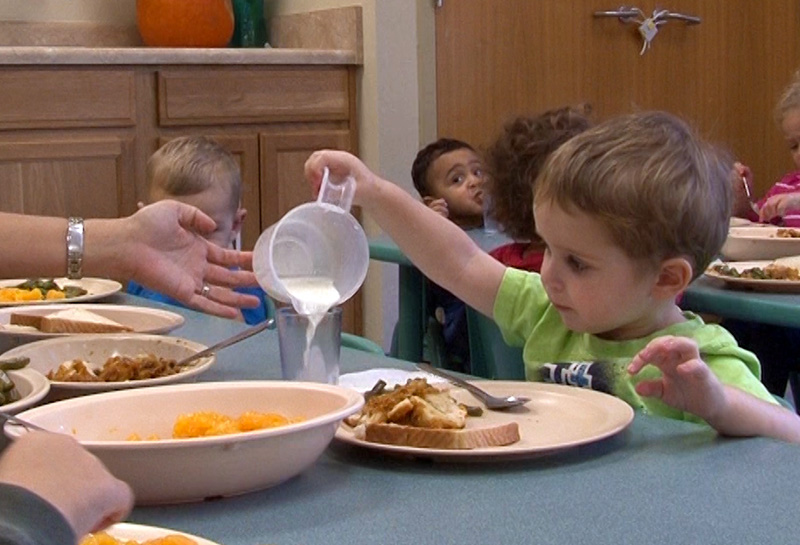
Supporting All Infants and Toddlers
Every child is born with his or her own unique way of approaching the world. This is called temperament. Some young children, for example, are constantly on the move while others prefer to sit and watch the world around them. Some young children enjoy new experiences and meeting new people while others are slower to warm up in new situations.
Rothbart (1989) defines temperament as the individual personality differences in infants and young children. As Murphy and Moon (2010) describe in Babies and Their Senses, “infants and young children vary greatly in their interest in different sensory areas, in the intensity of their attention to sensory stimuli, and in their sensitivity to feelings of comfort and discomfort, familiarity and strangeness, and the emotional context in which sensory experiences occur.”
Infants are born with a unique temperament. There is no right or wrong, good or bad temperament. By understanding temperament, you can continue to use what you know about infants and toddlers to encourage their strengths and support their needs. In the Apply section, you will review more information about temperament and consider what it means in your role as a responsive caregiver.
No matter how well you understand temperament and are attuned and responsive, there will be times when an infant or toddler in your care may not seem to be developing socially and emotionally. Some infants and toddlers may experience social or emotional difficulties. These difficulties may be related to inborn (nature) or environmental (nurture) influences. The caregiving strategies in this lesson apply and relate to all children; however, some children may require an additional level of support.
Each infant and toddler has a unique pattern of growth. In your daily interactions with the babies and toddlers in your care, you observe each young child’s particular strengths and possible areas of need. Your observation of each individual child’s development is part of your ongoing routine, and it helps you to recognize and celebrate infants’ and toddlers’ accomplishments. It also helps you to identify red flags—some aspect of the infant’s or toddler’s development that is not in line with the expected age range.
The following general strategies can help you care for infants and toddlers who experience social and emotional difficulties. Think about ways to maintain physical closeness and to offer gentle touch to help struggling infants and toddlers maintain a sense of control. You should always talk with a child’s parents to learn about any changes in home or other routines. You may recommend that parents contact their health-care provider and ask about completing a developmental screening for their child to identify any possible developmental delays. Stay informed about any additional community resources and specialists who may offer additional support to the family or to you.
- Observe the infant’s or toddler’s cues and responses to environmental stimuli. Think about ways to limit noise level, for example, or visual stimuli.
- Look for patterns of increased frustration or irritability in the infant or toddler during particular routines or times of day.
- Think about ways to maintain physical closeness and to offer gentle touch to help struggling infants and toddlers maintain a sense of control.
See
Promoting Social Emotional Development in Infants and Toddlers
Do
You can the promote social-emotional development of infants and toddlers in several ways:
- Respond to infants’ and toddlers’ needs with caring.
- Acknowledge an infant or toddler who points to a picture of himself or his family: “That’s right, Bobby that is a picture of you and your dad!”
- Model caring behaviors and empathy during all interactions.
- Read stories about feelings and show infants and toddlers pictures of people experiencing different emotions, like angry, sad, happy, and content.
- Build strong relationships with the families of infants and toddlers in your care.
Explore
Take a moment to list behaviors that you believe indicate healthy social-emotional development. Compare your list with the behaviors noted within this lesson’s chart. Next, read and review the handout, Encouraging Social-Emotional Development During the First Three Years. While thinking about the infants and toddlers in your care, highlight behaviors that you notice regularly and the ways you can encourage these behaviors during the first three years of life. Then, share and discuss your responses with your trainer, coach or family child care administrator.
Apply
Below are additional online resources to explore to better understand temperament of infants and toddlers. Pick one of the resources and use the information to learn more about the temperament of an infant or toddler in your care.
Glossary
Demonstrate
Berk, L. E. (2013). Child Development (9th ed.). Upper Saddle River, NJ: Pearson Education Inc.
Centers for Disease Control and Prevention. (2022). Developmental milestones. https://www.cdc.gov/ncbddd/actearly/milestones/index.html
Feldman, R. S. (2007). Child Development (4th ed.). Upper Saddle River, NJ: Pearson Education.
Illinois Early Learning Guidelines: For Children Birth to Age Three. Illinois Early Learning Project. Retrieved from https://www.isbe.net/documents/el-guidelines-0-3.pdf.
Murphy, L. B. & Moon, R. (2010). Babies and Their Senses. Zero to Three: National Center for Infants, Toddlers, and Families. Retrieved from: http://www.zerotothree.org/child-development/temperament-behavior/babies-and-their-senses.html
Rothbart, M. K. (1989). Temperament and Development. In G. Kohnstamm, J. Bates, & M.K. Rothbart (Eds.), Temperament in Childhood (pp. 187-248). Chichester, UK: Wiley.
Rothbart, M. K. (2004). Temperament and the Pursuit of an Integrated Developmental Psychology. Merrill-Palmer Quarterly, 50 (4), 492–505. doi:10.1353/mpq.2004.0035. Retrieved from: http://muse.jhu.edu/journals/merrill-palmer_quarterly/v050/50.4rothbart.html
Trawick-Smith, J. W. (2014). Early Childhood Development: A Multicultural Perspective (6th ed.). Upper Saddle River, NJ: Pearson Education.


